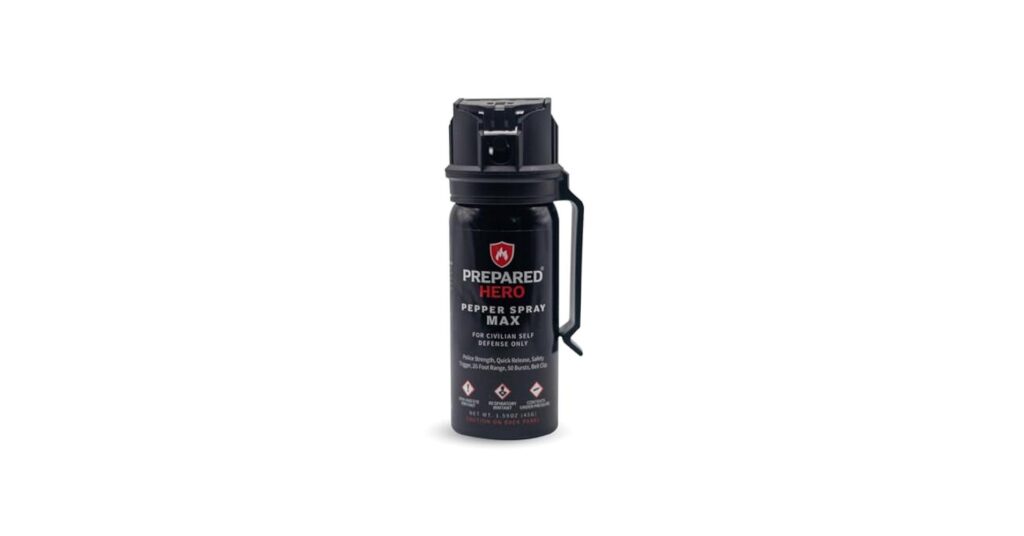Table of Contents
- Understanding the Chemical Composition and Strength Variations
- Usage Regulations and Legal Implications for Civilian and Police Pepper Spray
- Effectiveness in Different Scenarios and Response Considerations
- Safety Tips and Best Practices for Selecting the Appropriate Pepper Spray
- Closing Remarks
Understanding the Chemical Composition and Strength Variations
At the core of the differences lies the chemical formulation of the sprays. Both civilian and police pepper sprays typically contain Oleoresin Capsicum (OC) derived from hot peppers, but the concentration and additives vary widely. Civilian sprays usually contain about 1-2% OC concentration, designed to be effective yet safe for infrequent use and minimal risk of long-term harm. In contrast, police-grade sprays often hold concentrations upwards of 10-15%, combining high-purity OC with other agents to increase potency and cause rapid incapacitation. This elevated strength ensures that law enforcement can quickly control aggressive or dangerous subjects without prolonged confrontation.
Beyond just concentration, the chemical mix affects the spray’s duration and intensity. For example, many police variants include stabilizers and solvents that improve spray dispersion and skin adherence, resulting in sustained irritation and disorientation. Meanwhile, civilian sprays are formulated for shorter-lasting effects and quicker recovery, minimizing potential health risks for bystanders or unintended exposure. To break it down further, the key components include:
- Oleoresin Capsicum (OC) concentration: Determines the primary irritant level.
- Carrier solvents: Influence spray pattern and evaporation rate.
- Stabilizers and additives: Affect shelf life and performance.
Usage Regulations and Legal Implications for Civilian and Police Pepper Spray
Understanding the legal boundaries is crucial when it comes to using pepper spray, as laws vary significantly between civilian and law enforcement applications. Civilians typically must adhere to strict guidelines regarding the size, concentration, and permitted locations for carrying pepper spray. For instance, many jurisdictions impose limits on the amount of Oleoresin Capsicum (OC) spray allowed, restrict dispersal distances, and prohibit usage in certain public or sensitive areas. Violations can result in fines, confiscation, or even criminal charges if the spray is used irresponsibly or offensively rather than strictly for self-defense.
Police pepper spray, on the other hand, is administered under regulated protocols and comes with broader legal protections due to its deployment within the scope of law enforcement duties. Officers undergo specialized training to ensure proper and proportionate use of force, emphasizing minimizing harm while maintaining public order. That said, misuse or excessive use of pepper spray by police can lead to legal scrutiny, civil rights lawsuits, and departmental discipline. Key legal considerations include the context of its use and adherence to departmental policies that prioritize de-escalation and safe application.
- Civilian Restrictions: Quantity limits, age requirements, and possession bans in certain areas.
- Police Protocols: Formal training, usage guidelines tied to specific incidents, and accountability measures.
- Legal Consequences: Differ based on intent, proportionality, and jurisdictional statutes.
Effectiveness in Different Scenarios and Response Considerations
When deploying pepper spray, the context drastically influences its effectiveness. Civilian formulas often contain a lower concentration of active irritants, designed primarily for self-defense against an individual attacker. These formulations are optimized for close-range use and typically produce intense but short-lived effects, allowing the user a critical window to escape. Conversely, police sprays feature higher concentrations and specialized dispersal methods, such as fog or stream sprays, engineered to incapacitate multiple subjects or control crowds under high-stress conditions. This increased potency can overwhelm individuals more rapidly but may also carry greater risks of prolonged discomfort and medical complications.
Response considerations vary significantly between civilians and law enforcement personnel. For civilians, the key lies in knowing how to apply the spray effectively while maintaining personal safety and avoiding legal ramifications, which can differ widely by jurisdiction. Police officers receive extensive training on de-escalation tactics, aiming to minimize harm while achieving compliance, often using pepper spray as a non-lethal means to reduce physical confrontations. Important factors to consider include:
- Distance and aiming: Proper range ensures maximum impact with minimal risk of wind blowback.
- Duration of exposure: Law enforcement sprays may require longer exposure times to subdue aggressive suspects.
- Environmental conditions: Wind, confined spaces, and bystander proximity influence deployment choices.
Safety Tips and Best Practices for Selecting the Appropriate Pepper Spray
When choosing a pepper spray, it’s crucial to consider your specific environment and legal restrictions. Civilian sprays generally have lower concentration levels and shorter range, designed for personal defense in close encounters. Police-grade sprays may be more potent with a wider range, but they’re often regulated or prohibited for personal use. Always verify your local laws before purchasing or carrying any pepper spray, as carrying an illegal grade can lead to serious legal consequences.
- Assess your needs: Decide whether you need spray for home protection, outdoor activities, or urban commuting, as this influences the best formula and delivery system.
- Check the spray mechanism: Look for easy-to-use triggers with safety locks to prevent accidental discharge.
- Opt for reputable brands: Quality matters to ensure the spray will be reliable and effective when you need it most.
- Practice safe handling: Store pepper spray out of reach of children and test the activation method regularly in a safe environment.
Closing Remarks
In conclusion, understanding the key differences between civilian and police pepper spray is crucial for making informed decisions about personal safety. While both serve the purpose of self-defense, variations in formulation, concentration, and legal restrictions highlight the importance of choosing the right product for your specific needs. Whether you’re a civilian seeking protection or simply curious about law enforcement tools, being aware of these distinctions helps promote responsible use and enhances overall safety. Stay informed, stay prepared, and always prioritize your well-being.Check Our Other Blogs
- StunGun – Your Trusted Source for Stun Guns, Laws, and Self-Defense Tips
- PepperSprayLaws – Your Trusted Resource for Pepper Spray Information
- StunGunLaws – Your Trusted Guide to Stun Gun Legality and Safety




